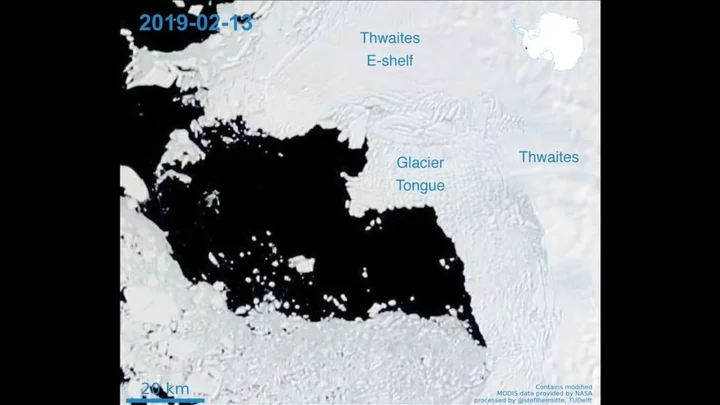Scientists have been left shocked and worried by a recent discovery made beneath the Thwaites Glacier in Antarctica, otherwise known as the 'doomsday glacier.'
The huge amount of ice has been destablised and has been reduced by nearly nine miles since the 1990s. It is believed to hold a large amount of water, that if it were to completely melt would raise sea levels by more than 2 feet around the globe and could unleash more water if neighbouring glaciers are disturbed.
Now, new research carried out at the location in West Antarctica that deeper cracks are beginning to form on the shelf of the glacier potentially compromising its intergrity, as published in a study on the science journal Nature.
Scientists used a robot named 'Icefin' to bore 2000 ft down below the glacier's surface to get a better look at what is going on beneath it by taking photos and videos as well as collecting valuable pieces of data about temperature and sea levels.
What they found wasn't very reassuring.
Although the rate of the melting wasn't as fast as they had originally feared the researched still painted a "very nuanced and complex picture."
Speaking to CNN, lead researcher Peter Davis said: "The glacier is still in trouble. What we have found is that despite small amounts of melting there is still rapid glacier retreat, so it seems that it doesn’t take a lot to push the glacier out of balance."
However, it wasn't all doom and gloom as robot creator and scientist Britney Schmidt of Cornell University, revealed that signs of life had been found on the glacier. She said: "To accidentally find them here in this environment was really, really cool. We were so tired that you kind of wonder like, ‘am I really seeing what I’m seeing?'.
"You know because there are these little creepy alien guys (the anemones) hanging out on the ice-ocean interface. In the background is like all these sparkling stars that are like rocks and sediment and things that were picked up from the glacier. And then the anemones. It’s really kind of a wild experience."
That being said, Oregon State University ice researcher Erin Pettit, who didn't work on the study believes that the findings are a cause for concern.
She told Associated Press: "Thwaites is a rapidly changing system, much more rapidly changing than when we started this work five years ago and even since we were in the field three years ago. I am definitely expecting the rapid change to continue and accelerate over the next few years."
Have your say in our news democracy. Click the upvote icon at the top of the page to help raise this article through the indy100 rankings.

